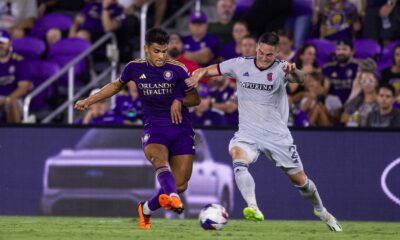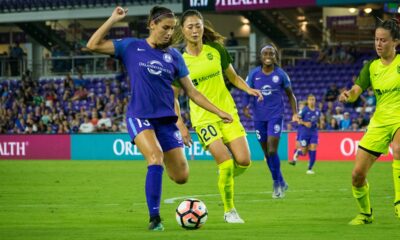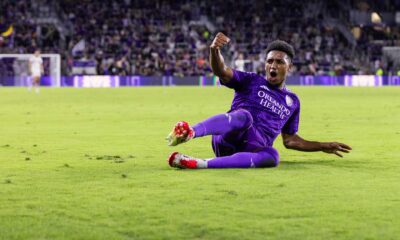Orlando City
Orlando City vs. Toronto FC: Final Score 2-1 as Lions Pick up Road Win in Canada
The Lions fell behind early again but were able to grind out a road win in Toronto.
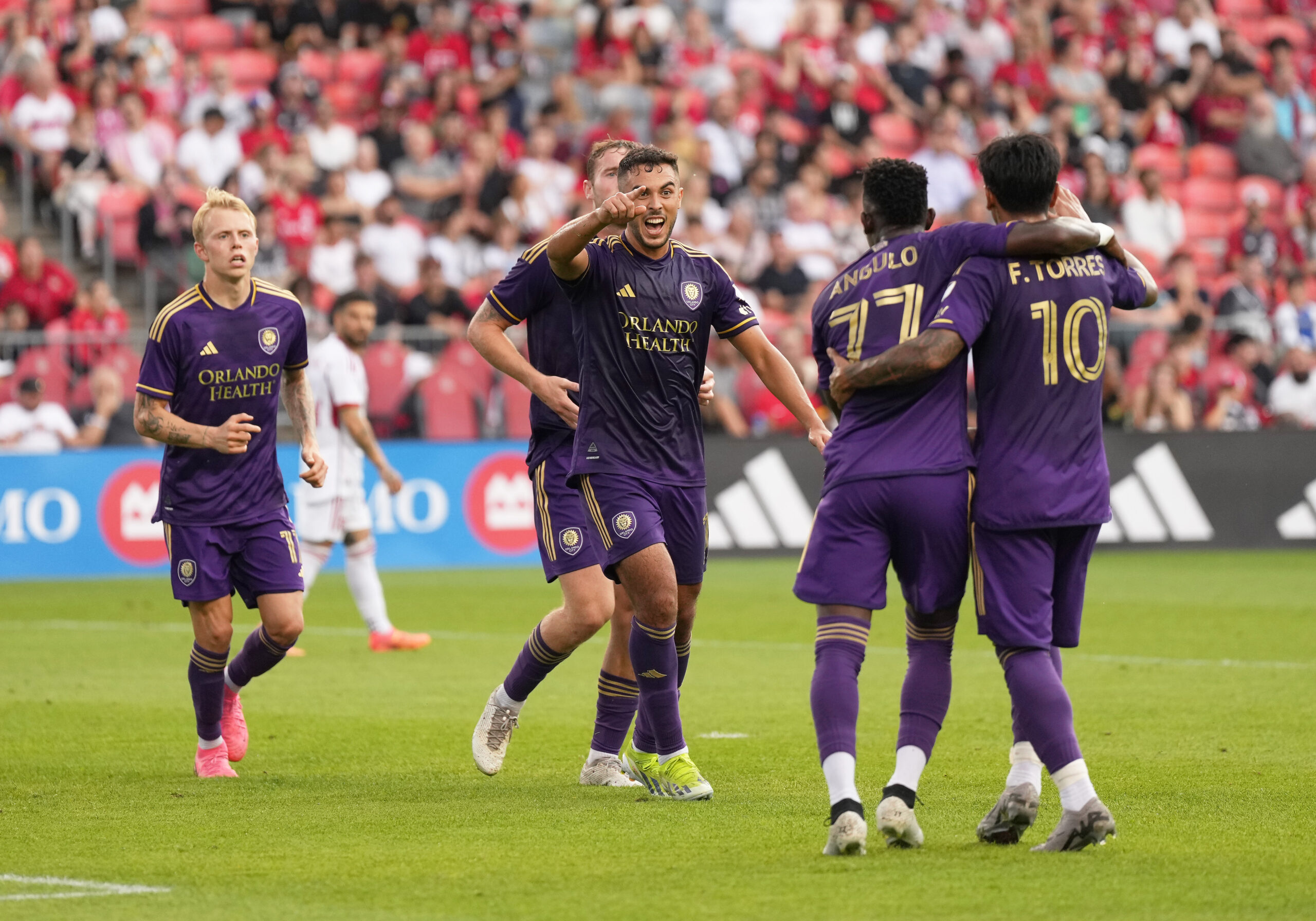
The Lions conceded in the opening minutes yet again, but this time Orlando City (6-9-6, 24 points) was able to come from behind and take all three points. Martin Ojeda and an own goal forced by Facundo Torres brought the Lions back just before halftime in a 2-1 victory over Toronto FC (7-12-3, 24 points) at BMO Field. Derrick Etienne Jr. had given the hosts the lead just minutes after the opening kick, but the Lions held firm despite several nervy moments in the second half.
“We want to dedicate this game to Mason (Stajduhar), who has suffered this tremendous injury. And I know he’s happy to see us winning, but we want to share this joy with him. So, this is for Mason. We’re all talking about it in the lockerroom,” Orlando City Head Coach Oscar Pareja said after the match. “I want to congratulate the players for such an important resolve in this moment that we need to win games. Today they demonstrated the commitment that they have with the club. So, we’re very proud of this result and the effort that they had on the pitch.”
Pareja’s lineup featured the return of Pedro Gallese in goal behind a back line of Kyle Smith, Robin Jansson, Rodrigo Schlegel, and Dagur Dan Thorhallsson. Wilder Cartagena was also back in the starting XI, joining Cesar Araujo in central midfield behind an attacking line of Ivan Angulo, Ojeda, and Torres, with Duncan McGuire up top.
Toronto scored on its first shot, as Orlando’s defensive inattentiveness continued. Federico Bernardeschi sent in a cross from the right that Raoul Petretta easily won over Thorhallsson at the back post. He headed it down into the middle of the area where absolutely no Lions were concerned with Etienne Jr., who smashed it past Gallese from point-blank range to open the scoring. It was a ridiculously easy goal for the hosts just five minutes in, and it was the 10th goal conceded by Orlando in the first 15 minutes of an MLS match this season — the 16th in all competitions.
“I think it was a couple of distractions that we had,” Pareja said about the early goal. “It’s something that I need to work on and help them. That’s probably a lack of sharpness or concentration, because after that we just engaged in the game in such a way that we looked as we wanted. But these things cannot happen. It’s something that we have been working on but it seems like it is not enough yet. We all collectively need to be aware that this can’t happen.”
Bernardeschi didn’t miss by much in an attempt to double the lead four minutes later. Marked by Angulo, the Italian made one quick fake and easily cleared himself for a left-footed shot that fizzed just off target.
After a dreadful effort from distance by Cartagena came nowhere near the goal, Orlando fashioned its first decent scoring chance in the 15th minute. Ojeda took the ball away in the attacking third, worked his way from right to left across the top of the box to free himself, and fired a shot on goal. The Argentine couldn’t generate much power on the effort, however, and it was an easy save for Sean Johnson.
Angulo had a couple of crosses blocked in the following minutes, with one getting knocked behind for a corner in the 24th minute. The initial cross was cleared but Orlando nearly created something with the two recycled attacks through Cartagena. The first was fizzed dangerously in front with the Peruvian’s right foot, but Johnson did well to get down and get a hand to it to keep it from getting through, allowing his defense to clear. Another ball came in to Cartagena, and this time he headed it across the box but it didn’t reach the intended target.
Three minutes after that flurry, the Lions equalized. Angulo got his cross through this time and it was a perfect ball for Ojeda to smash home with his head after being left unmarked in front. His second goal of the season tied the match in the 27th minute.
“Of course, I’m happy about the the goal that I was able to convert, but I think more so just overall about this victory that the team needed to get tonight and that we’ve been working so hard to get,” Ojeda said through a club interpreter. “When I saw Facu turn to the other side of the field, the opposite side of where I was, I knew I had to get into the box. That was what I was trying to do to make sure Duncan wasn’t alone in the box. And then, once I saw Ivan out wide in space and Facu played the ball to him, I knew that if I could get into the center, I’d be in a really good spot to make a play on the ball. And thankfully the cross from Ivan was fantastic, and he put it right on my head, where all I had to do was just make the movement towards the ball, and thankfully it went in.”
The Lions continued to control the match for several minutes after the tying goal, winning some set pieces but doing little with them. Thorhallsson scorched a free kick from the left toward goal in the 33rd minute but it hit the wall and deflected out for a corner. On the ensuing set piece, Araujo got a foot to it and knocked it to the left of the goal, where Jansson tried to redirect it but he missed just wide.
Toronto got back on the front foot after that series of chances. A free kick conceded by Araujo near the left sideline was sent in front and headed toward the back post, forcing Gallese to get over and punch it away. The second ball in was cleared out by Jansson’s head, but Toronto maintained possession. Lorenzo Insigne got a step on Thorhallsson moving inside from the left and sent a curling shot just wide of the right post in the 39th minute.
Orlando took the lead on the brink of halftime. A well-worked play starting in the midfield ended up with Torres on the right. The Uruguayan tried to cross in with his right foot. Toronto defender Gomis got a foot on it but only deflected it toward the back post. Johnson couldn’t react in time and the ball bounced in to make it 2-1 Lions in the 45th minute. It was just the second own goal to Orlando’s benefit in 2024.
“It means a lot for the group to see Facu at this level,” Pareja said about his star setting up the winner with his seldom-used right foot. “Today he threatened not just (with) his left cutting inside, but his right, and I think it’s going to give him a lot of confidence because he could do that much more often on receiving the ball and pushing the ball forward on his right. That’s very difficult to mark, and today he tried. He decided to do it, and look at what happened — a cross that was dangerous.”
The three minutes of stoppage time played out without incident and Orlando took its lead into the lockerroom.
The Reds had the halftime advantage in possession (51.7%-48.3%) and passing accuracy (88.3%-87.3%). Orlando finished the half with more shots (8-5), shots on target (2-1), and corners (4-0). The half was evenly played, but the own goal was the difference.
“The first half I liked it a lot,” Pareja said. “I thought we played very well. This is pretty much where we are and we scored goals. And despite that first goal in the first minutes that shouldn’t happen, the reaction was outstanding from the players.”
Neither team was able to find a goal in the second half, although Toronto came closest and fashioned by far the most chances. Orlando struggled to maintain possession and eventually gave up doing anything but trying to stay organized and hit on the counter — something Luis Muriel had two golden opportunities to do but could not.
When the Lions did have chances to get the ball forward, McGuire struggled to win the initial ball or maintain possession, as the striker fought with his first touch most of the evening.
Orlando created the first good chance of the second half just three minutes after the restart as Torres got in on the right and received the ball, but he slipped as he was cutting back to shoot it and ended up getting his attempt blocked as a result of the delay. A minute later, the Lions were in good shape on another transition opportunity but Angulo became indecisive, then made one too many moves, allowing the defense to arrive and dispossess him.
One of McGuire’s turnovers led to a Toronto chance in the 53rd minute as a cross from the left was just inches over Prince Owusu’s head. Three minutes later, Insigne switched play from left to right to Bernardeschi, who sent a dangerous cross through the area but it skipped out the other side for a goal kick.
From that point on, it was primarily about Orlando keeping Toronto from breaking down the door. Jansson did well in the 70th minute to clear the box after Owusu knocked down a dangerous ball to the middle of the penalty area. Gallese caught a high deflection moments later as the Reds continued to rain crosses into the penalty area and the Lions’ block got pushed lower and lower.
Orlando survived a poor header from center back Aime Mabika in the 76th minute when Jansson tripped in the area.
As time wound down, the Lions finally created some opportunities in transition to put the game away. The first came in the 86th minute when Gallese punched the ball out of his area and it was sent up the field for second-half sub Muriel. He had two defenders closing on him, but seeing Johnson off his line, he went for goal from midfield and missed wide to the right. He would have done better to play in fellow sub Ramiro Enrique, who would have been all alone, but perhaps he didn’t see the Argentine.
Kobe Franklin nearly tied the match in the 90th minute. He took a layoff at the top of the area and smashed a shot off Gallese’s crossbar.
Muriel got down the field in the 93rd minute and beat Johnson with his shot but missed inches wide of the left post. Three minutes later, he found himself in a similar situation and missed inches wide of the right post, failing again to seal the deal.
After a few more nervous minutes, the final whistle blew and Orlando had its road win.
Toronto finished with the advantage in possession (56.6%-43.4%), passing accuracy (87.3%-85%), and corners (6-4), while each team finished with 13 shot attempts and Orlando put more on frame (2-1).
“Second half, we defended in the last period of the game very low,” Pareja said. “We couldn’t contain the numbers and the volume of the players that Toronto sent, but we had also some opportunities to put the game (to) 3-1. So, again, we’re happy. This is a good step for us in this moment. Now we’re looking forward to going back home and winning there.”
The Lions won their third straight match at BMO Field and improved to 9-9-3 in the all-time series and 4-4-3 on the road against Toronto, although one of those “road” games came on Orlando’s home field during the Canadian pandemic travel restrictions.
The Reds’ winless skid reached eight matches (0-6-2) after a bright start to the season.
The Lions return home with another quick turnaround as D.C. United visits Inter&Co Stadium on Saturday.
Orlando City
Orlando City vs. St. Louis City: Preview, How to Watch, TV Info, Live Stream, Lineups, Match Thread, and More
The Lions make their first trip to St. Louis looking to build on their win at Colorado.
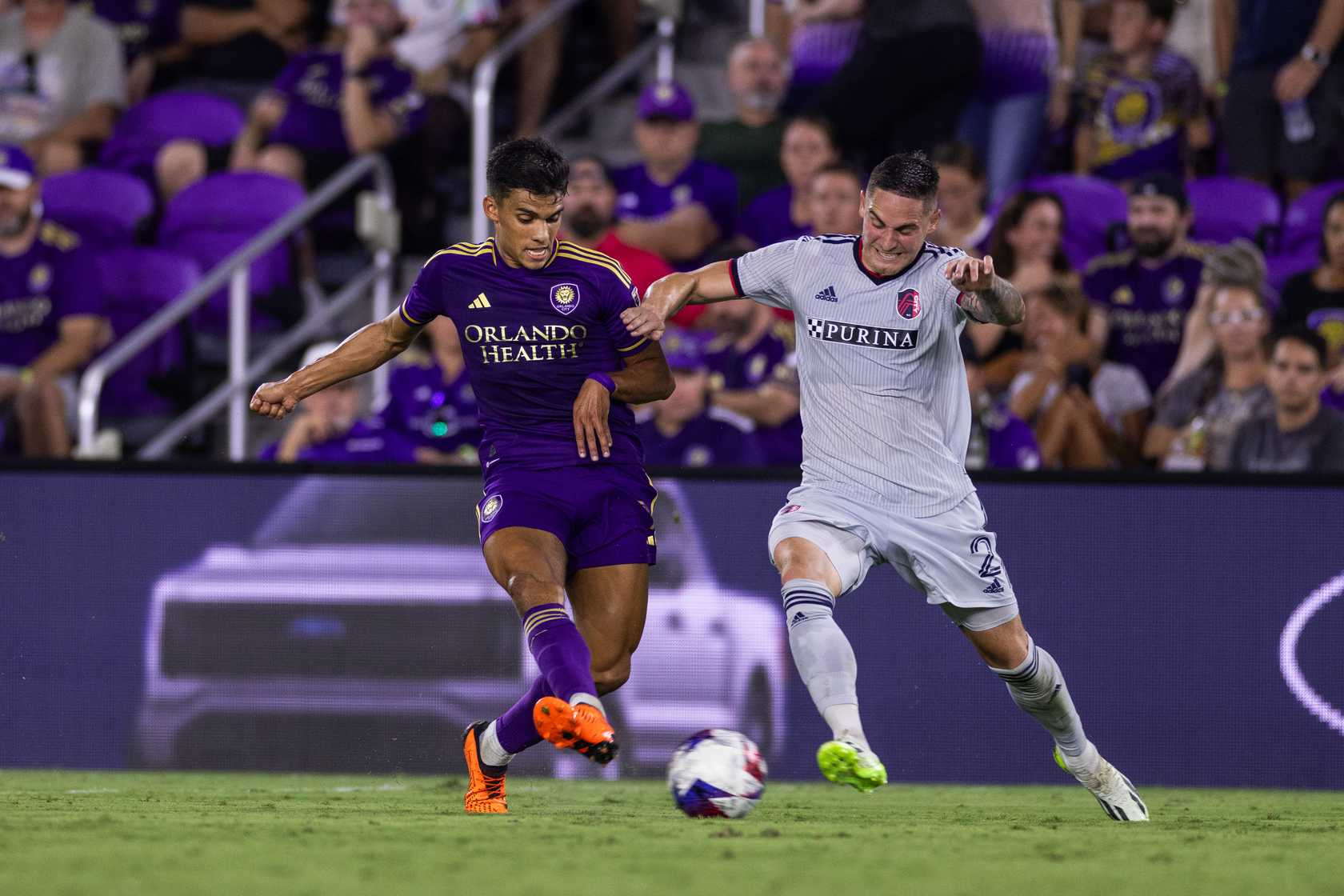
Welcome to your match thread and preview for a Wednesday night matchup between Orlando City (8-4-6, 30 points) and St. Louis City SC (3-9-6, 15 points) at Energizer Park in St. Louis, MO (8:30 p.m., MLS Season Pass on Apple TV). This is the second meeting ever between the two sides, the first in St. Louis, and the only one on the 2025 regular-season schedule.
Here’s what you need to know about the match.
History
These teams have met just once before. Orlando City won that match 2-1 on Aug. 26 at Exploria Stadium on Facundo Torres’ penalty in the first minute of stoppage time. Torres completed his brace after a handball in the box by Anthony Markanich stopped a shot by Rafael Santos. Torres opened the scoring in the second half, but Rasmus Alm equalized, with his goal being awarded after video review revealed the referee’s assistant should not have raised their flag for the ball going out of play prior to the critical pass that led to the goal. Jake Nerwinsky was sent off late in that game for a foul denying Ramiro Enrique a goal-scoring opportunity.
Overview
The Lions are 3-2-4 on the road this season after coming off a tightly contested 1-0 road win at Colorado on June 14, snapping a two-match losing streak that ended a busy May schedule. Orlando has been off since beating the Rapids but will try to continue building momentum as the month of June comes to a close. The Lions have six matches against Eastern Conference competition after visiting tonight’s Western Conference opponents in the leadup to the 2025 Leagues Cup at the end of July.
Orlando City center back Rodrigo Schlegel will serve his one-game suspension for yellow card accumulation tonight, and with Alex Freeman away with the USMNT, the Lions will be missing half of their starters on the back line for this match as the entire right half will be out. Look for David Brekalo to move to right center back. Dagur Dan Thorhallsson is the most likely candidate to take the right back spot, with either Kyle Smith or Santos slotting in at left back.
St. Louis City is 2-3-4 at home this season and is coming off a wild 3-3 home draw against the LA Galaxy on June 14. Joao Klauss scored a hat trick in the match, putting his third goal of the game in the net in the fifth minute of stoppage time to steal a point against the defending champions. Tonight’s hosts are 0-1-1 in their last two matches, but they’ve been playing better lately, with five consecutive games either decided by a single goal or finishing in a draw.
Klauss may have gotten three of his five goals this season in the last game, but he can be one of the league’s most lethal finishers. It’s not the best night for Orlando to be missing half of its back line with the Brazilian rounding into form. On the other end, Roman Burki is one of the best goalkeepers in the league, so Orlando City will need to be clinical to finish chances — something that the team has struggled with at times.
“St. Louis is a team we don’t regularly play, but we’ve followed them over the last three or four games,” Orlando City Head Coach Oscar Pareja said ahead of the match. “They’ve changed coaches, even though it’s someone who has been within the system. We try to capture what their current modes are — how they’re structured, how they’re playing — and then merge that into our game plan. We don’t have as much context of a rivalry as we usually do, since it’s a team we don’t know very well. But we keep preparing in our way and keep insisting that imposing our style on the game is what we’re looking for.”
In addition to Schlegel (suspension) and Freeman (international duty) the Lions will be without Duncan McGuire (shoulder), Wilder Cartagena (Achilles), and Yutaro Tsukada (knee), while Joran Gerbet (thigh) is listed as questionable. St. Louis City will be without Alm (hip), Chris Durkin (knee), Henry Kessler (hamstring), Eduard Löwen (hamstring), Joakim Nilsson (knee), and Tomáš Ostrák (lower body).
Match Content
- The most recent epsiode of the PawedCast includes our key matchups and score predictions for tonight’s match.
Projected Lineups
Orlando City (4-4-2)
Goalkeeper: Pedro Gallese.
Defenders: Rafael Santos, Robin Jansson, David Brekalo, Dagur Dan Thorhallsson.
Midfielders: Ivan Angulo, Cesar Araujo, Eduard Atuesta, Marco Pasalic.
Forwards: Martin Ojeda, Luis Muriel.
St. Louis City SC (4-3-3)
Goalkeeper: Roman Burki.
Defenders: Jayden Reid, Timo Baumgartl, Kyle Hiebert, Tomas Totland.
Midfielders: Alfredo Morales Simon Becher, Akil Watts.
Forwards: Celio Pompeu, Joao Klauss, Marcel Hartel.
Referees
REF: Guido Gonzales, Jr.
AR1: Ryan Graves.
AR2: Walt Heatherly.
4TH: Matt Thompson.
VAR: Kevin Terry, Jr.
AVAR: TBA.
How to Watch
Match Time: 8:30 p.m.
Venue: Energizer Park — St. Louis, MO.
TV/Streaming: MLS Season Pass on Apple TV.
Radio: AM 810 FOX Sports Radio Orlando (English), Mega 97.1 FM (Spanish).
Social Media: For rapid reaction and live updates, follow us on Bluesky Social at @themaneland.bsky.social or follow Orlando City’s official Twitter (@OrlandoCitySC) or Bluesky (@OrlandoCitySC) feed.
Enjoy the game. Go City!
Lion Links
Lion Links: 6/25/25
Orlando City and OCB play tonight, the Club World Cup continues, and more.
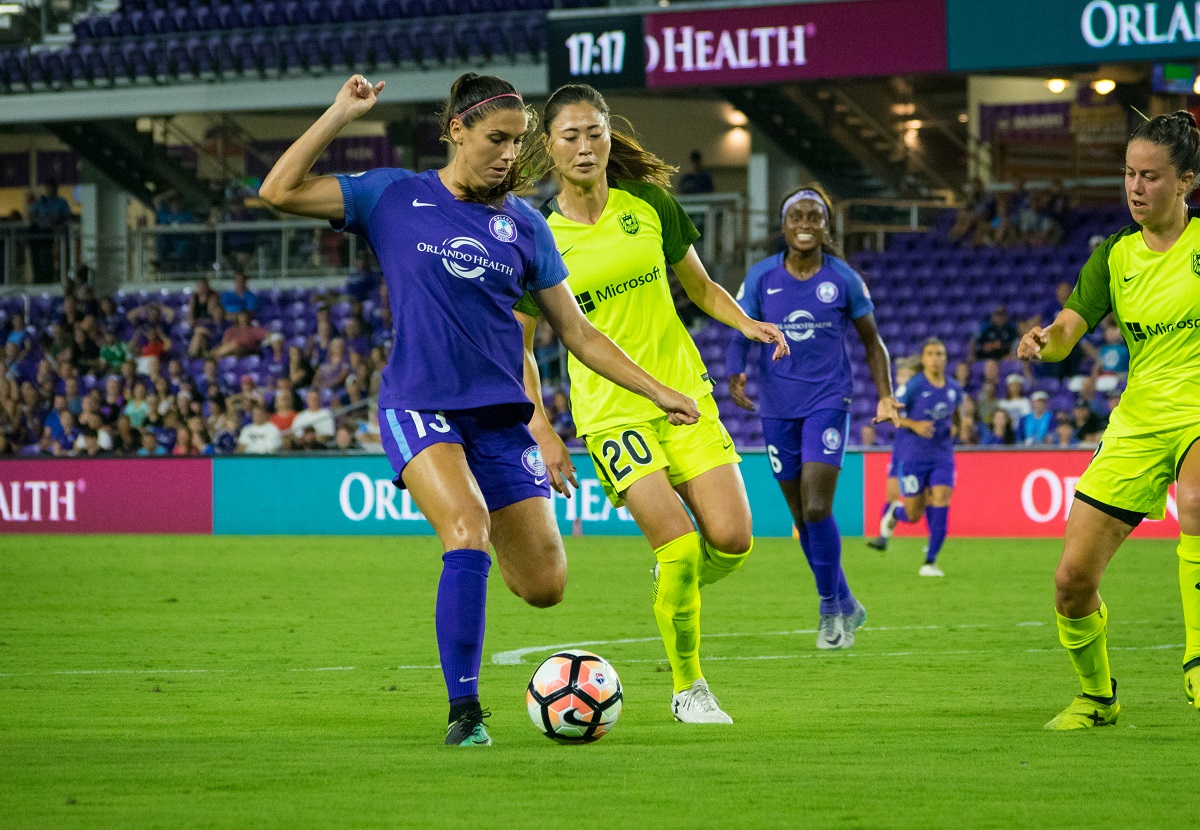
Welcome to Wednesday, Mane Landers. It is a busy week here at The Mane Land. Orlando City and Orlando City B play tonight, there are FIFA Club World Cup matches, Concacaf Gold Cup, and USWNT friendlies. It’s a lot, but it also means there’s a ton of soccer to watch, which is a good thing. Let’s get to the links.
Go West, Orlando City
Orlando City heads to Missouri to take on St. Louis City FC tonight. The Lions will be without Alex Freeman (international duty) and Rodrigo Schlegel (yellow card accumulation). Orlando City will need to deal with St. Louis City striker Joao Klauss while finding goals on the road. This is a must-watch midweek match. We will have a preview later today, and you should also listen to The Mane Land PawedCast to prepare.
Orlando City B Returns Home vs. Toronto FC II
Orlando City B hosts Toronto FC II at Osceola County Stadium tonight. Like the first team, we will have coverage for you. The Young Lions are coming off a two-week break after a loss to Carolina Core FC. It will be interesting to see which OCB shows up for the match. You can watch the match on mlsnextpro.com.
Club World Cup, Orlando-Style
There might not be as many people in the seats at the Club World Cup as FIFA would like, but Orlando is still a big part of it. The group stage finishes this week as the competition heads into the Round of 16. There’s a ton of prize money up for all the competitors no matter where they are currently in the standings. Our Michael Citro was at Camping World Stadium last night to cover LAFC vs. Flamengo in Group D.
USMNT News
The USMNT will face Costa Rica Sunday in a Concacaf Gold Cup quarterfinal match in Minneapolis. Malik Tillman has been a bright spot on the roster, though Orlando City fans will be watching Freeman. The perpetual search for a consistent striker continues for the USMNT, though Patrick Agyemang may be the answer — at least for now.
Free Kicks
- The Pride managed to maintain the Number 2 spot in SI.com’s Power Rankings despite the loss to Racing Louisville.
- So, the 2025 MLS All-Star jersey has arrived. Thoughts?
- There’s nothing quite like having your number retired after playing for a team for two whole years after playing for another club for six years. It is especially special when the new club has been in existence for a whole four years. Congratulations to former Orlando Pride forward Alex Morgan.
- Lyon has been relegated to Ligue 2 due to the club’s financial problems.
- Paul Mullin is headed to Wigan on a season long loan from the recently promoted Wrexham AFC. That’s probably a spoiler for a future episode of Welcome to Wrexham.
- Concacaf has cleared Jesse Marsh of allegations that he disregarded the competition’s rules regarding suspended match officials.
- After the Gold Cup, Agyemang may be making the move from Charlotte FC to Derby County.
- You may have seen that the USWNT is celebrating Pride month with rainbow numbers on the team jerseys. I am a supporter and ally, but it means even more to the players.
That will do it for today. Make sure you check back later for our match coverage. You can also follow our live coverage on Bluesky. Vamos Orlando!
Lion Links
Lion Links: 6/24/25
Orlando City’s upward aspirations, Tim Weah reportedly set for transfer, Club World Cup roundup, and more.

Happy Tuesday, everyone. We’ve got a busy week ahead of us with the Club World Cup approaching the end of the group stage, OCB at home on Wednesday, and Orlando City back in action with a pair of games. That means we have plenty to talk about, so let’s get straight into today’s links.
Orlando City’s Lofty Goals
Kyle Smith took some time after training on Monday to speak to the media and shed some light on where OCSC is at right now. The utility player was candid in saying he believes this year’s team is the best one he’s seen since he’s been with the club, and that’s saying something considering he’s the longest-tenured player on the team. Smith said the team is focused on climbing higher in the standings and that the two recent breaks will help the team do just that. He emphasized the importance of handling extra time off between games the right way by making sure the players are taking care of their bodies, getting in the gym, and recovering afterwards. That sort of professionalism paid off in the 1-0 win over the Colorado Rapids, so hopefully the same is true of Wednesday’s game against St. Louis City.
Tim Weah Reportedly on the Move
Nottingham Forest has reportedly agreed a deal with Juventus to sign Tim Weah and fellow Juve player Samuel Mbangula for roughly €22 million. That being said, personal terms have not yet been agreed upon with Weah, and that will likely take some time, since he’s playing for them at the Club World Cup, and the Italian side is probably keen to minimize outside distractions. Weah broke out with Lille during a four-season spell with the French side, earning a move to Juventus in 2023 as a result.
Club World Cup Roundup
The Club World Cup continues to roll on, as the tournament entered its final round of group stage games on Monday. Atletico Madrid became the first big name to exit the competition, as it beat Botafogo 1-0 to finish level with the Brazilians on six points but will be going home due to having worse goal difference. Atletico needed to win by at least three in order to overtake Botafogo in the standings and might have managed it if not for some poor finishing. In Group B’s other game, Paris Saint-Germain took down the Seattle Sounders 2-0 to finish top of the group. Seattle was given a brutal draw and accounted itself as well as can be expected, but ultimately, the Sounders exit the competition without picking up a point.
Club World Cup Takeaways
Speaking of the Club World Cup, what are some of the impressions so far of the expanded tournament? There have been plenty of good things, as teams have been taking it seriously with strong lineups, and barring the outlier that is Auckland City, no one team has been consistently getting shelled. On the other hand, making the jump from six teams to 32 simply feels like too much too soon, and that’s probably contributed to fluctuating levels of interest from local fans. High ticket prices and games starting in the heat of the day haven’t helped much either, as weather conditions have been a recurring concern among both fans and players. The competition is still a net positive overall, but there are certainly some things to learn from and improve upon next time around.
Free Kicks
- Check out some of the scenes from the Lions’ training session on Monday.
- The Orlando Pride slid down to fifth in ESPN.com’s NWSL power rankings.
- Three people are dead while a further 81 have been injured following the collapse of a stand at an Algerian soccer match.
- Manchester United has reportedly submitted an improved offer for Bryan Mbuemo.
- Manchester City’s Rico Lewis has had his Club World Cup ban extended for two additional matches.
That’s all I have for you this morning. Vamos Orlando!
-
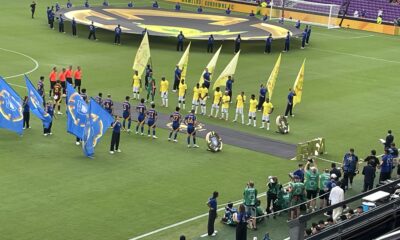
 Local Soccer Events1 week ago
Local Soccer Events1 week agoUlsan HD FC vs. Mamelodi Sundowns FC: Final Score 1-0 as South African Side Wins First FIFA Club World Cup Match in Orlando
-
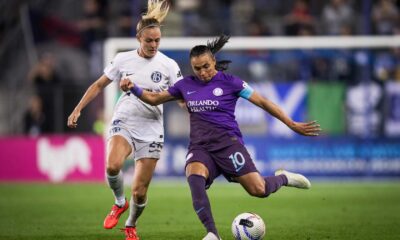
 Orlando Pride2 weeks ago
Orlando Pride2 weeks agoOrlando Pride vs. Bay FC: Preview, How to Watch, TV Info, Live Stream, Lineups, Match Thread, and More
-
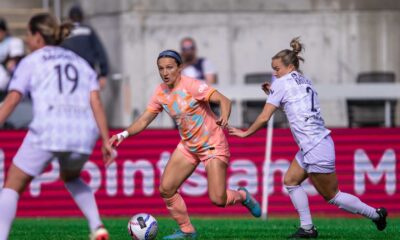
 Orlando Pride5 days ago
Orlando Pride5 days agoOrlando Pride vs. Racing Louisville FC: Preview, How to Watch, TV Info, Live Stream, Lineups, Match Thread, and More
-
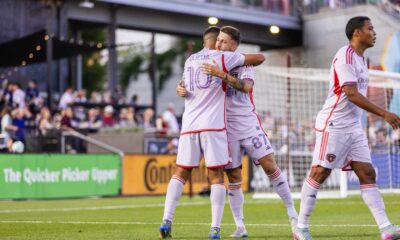
 Orlando City2 weeks ago
Orlando City2 weeks agoOrlando City vs. Colorado Rapids: Final Score 1-0 as Ojeda’s Goal Snatches Road Win for Lions
-
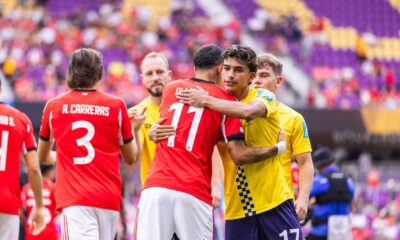
 Local Soccer Events5 days ago
Local Soccer Events5 days agoSL Benfica vs. Auckland City FC: Final Score 6-0 as Benfica Wears Down New Zealanders
-
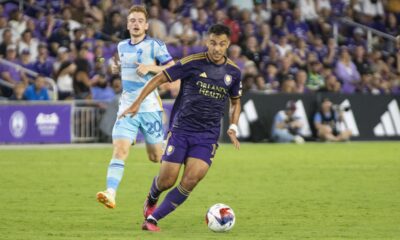
 Orlando City2 weeks ago
Orlando City2 weeks agoOrlando City vs. Colorado Rapids: Preview, How to Watch, TV Info, Live Stream, Lineups, Match Thread, and More
-
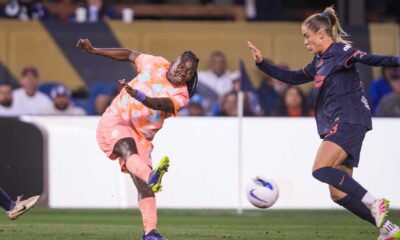
 Orlando Pride2 weeks ago
Orlando Pride2 weeks agoOrlando Pride vs. Bay FC: Final Score 1-0 as the Pride Hold On After Banda’s Goal
-
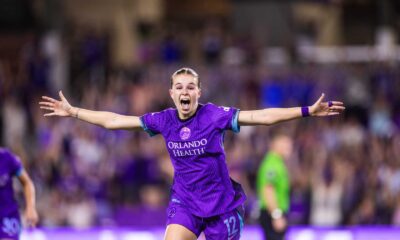
 Podcasts2 weeks ago
Podcasts2 weeks agoSkoPurp Soccer Episode 90: Houston Rewind, Pride Call-Ups, Bay FC Preview, and More


